The first American in space was a naval aviator, as was the first American to orbit the Earth.1 The first man on the moon was a naval aviator, as were five of the six commanders of Lunar missions who followed him. And the USN was primarily responsible for the recovery of every single manned mission from Alan Shepard's first steps into space until the beginning of the Shuttle program. Today, the 50th anniversary of Apollo 12's landing on the Moon with an all-Navy crew,2 seems a good time to examine some of these contributions.
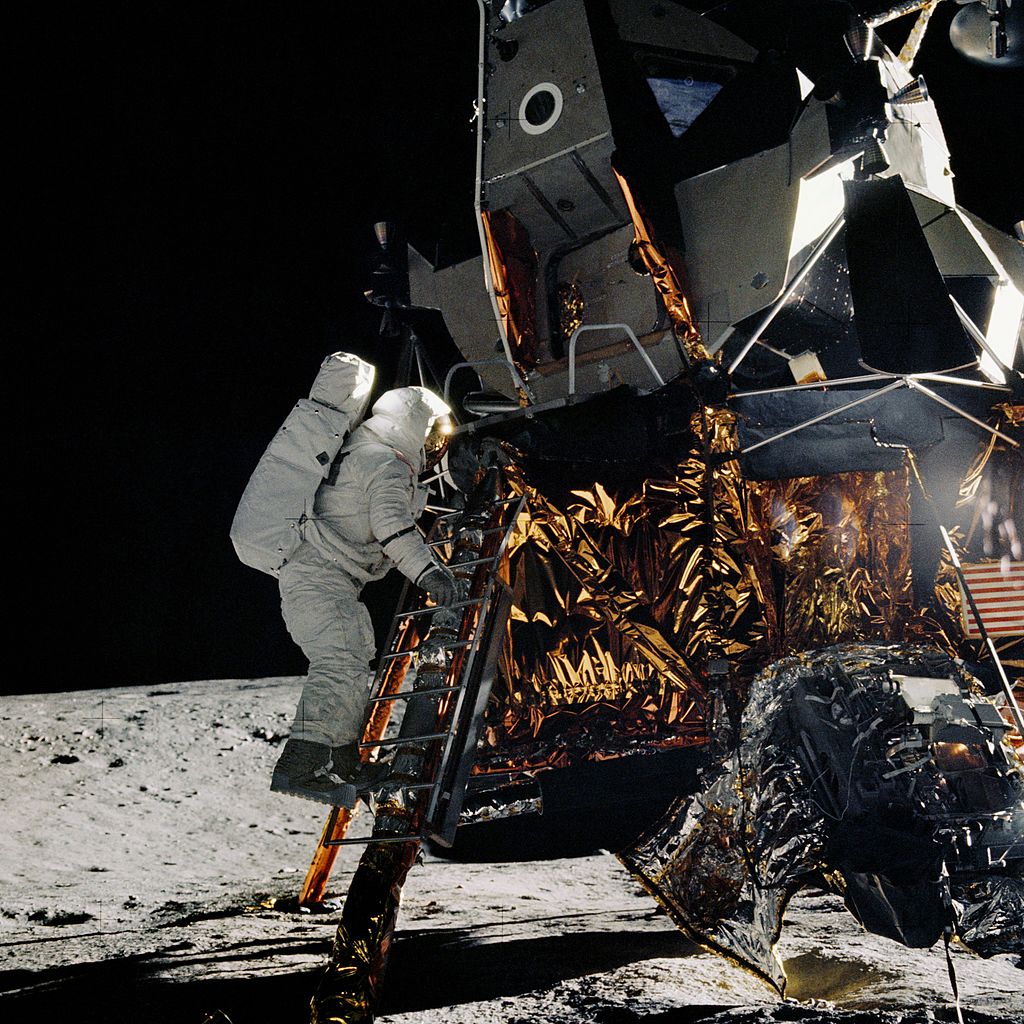
Al Bean about to step on the Lunar surface
The sea and space have been linked since time immemorial, when early mariners studied the stars to guide them across trackless seas. The United State's first space agency, the Naval Observatory, was created in 1830 to support celestial navigation. It was one of the country's leading astronomical institutions during the 19th century, playing a major role in measuring the distance to the sun by observing the transit of Venus and providing the telescope used to discover the moons of Mars in 1877. As academic astronomy grew in strength, the Naval Observatory began to focus instead on providing precision timing and reference frames, and remains a world leader in these fields. It also houses the Vice President and operates an observatory in Flagstaff, Arizona.
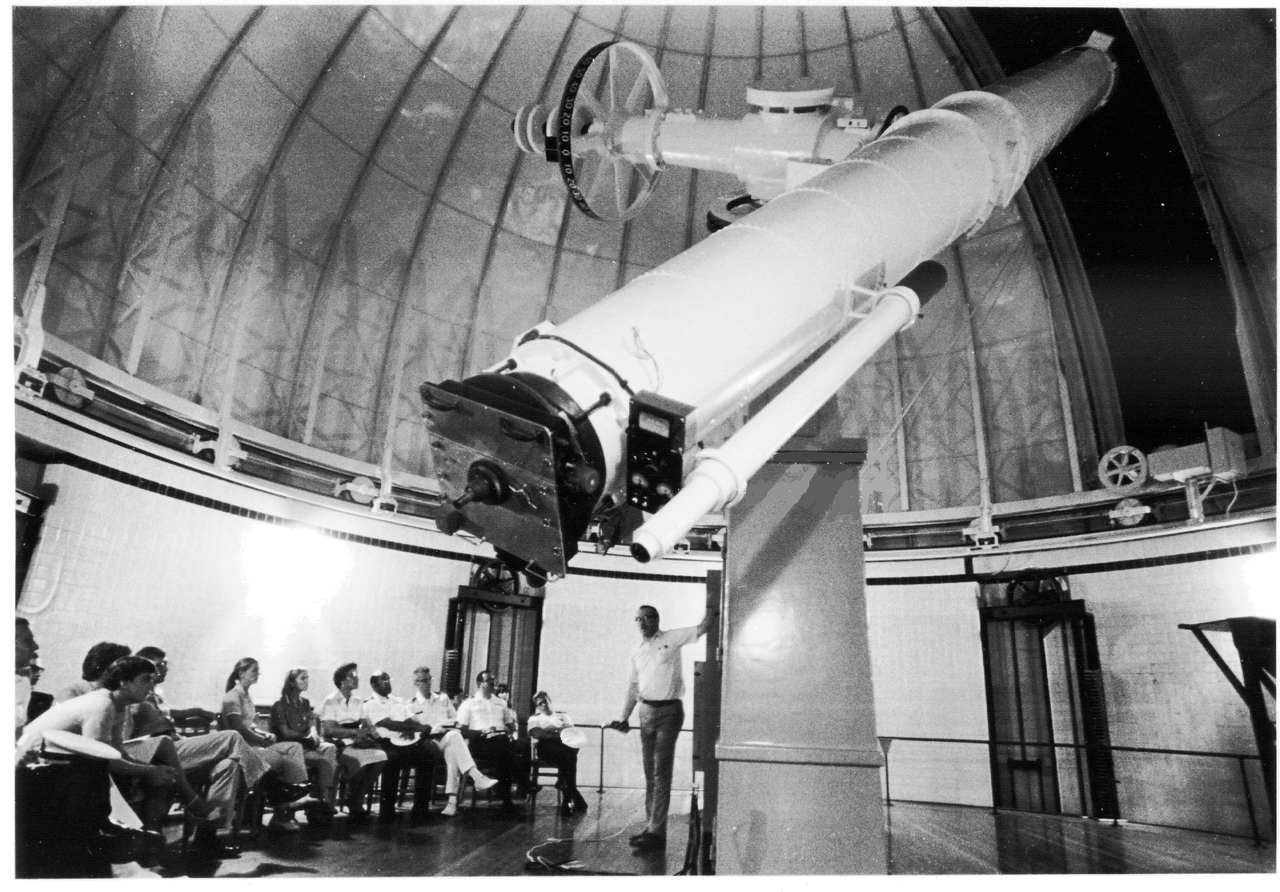
The Naval Observatory's 26" telescope
Nor was the Observatory the USN's only early foray into space research. During WWII, Robert Goddard, one of the fathers of rocketry, was employed to develop rocket boosters for planes, in the process doing a great deal of work on hypergolic propellants. But serious work only began in the mid-40s, when the sounding rocket program, to measure the characteristics of the upper atmosphere and the edge of space, was established. The primary purpose of this program, which initially used captured German V-2s, was to improve the performance of long-range radio communications. As the V-2s ran out, the USN developed the Viking and Aerobee sounding rockets. Neither was particularly notable except to atmospheric scientists, but they laid the groundwork for one of the early space race's more interesting stories.
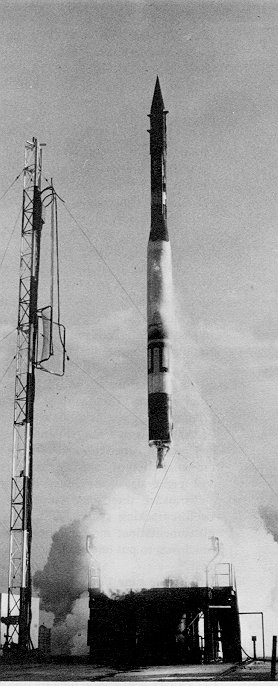
Vanguard I on its way to orbit
The international scientific community had designated 1957-1958 as the International Geophysical Year, and both the US and USSR had announced plans to orbit a satellite. The Navy, Air Force and Army all provided proposals, and the Navy's was selected, probably because Project Vanguard was based on Viking and Aerobee instead of a repurposed ballistic missile, and the Eisenhower Administration believed its civilian origins would help to establish the principle of freedom of satellite overflights, laying the groundwork for the forthcoming reconnaissance satellite program. However, there was little urgency, and Vanguard was still under development when Sputnik 1 went into orbit on October 4th, 1957. Vanguard went into high gear, but the first launch attempt, on December 6th, was a failure. The rocket rose a few feet, then lost thrust and fell back to the pad and exploded in full view of the TV cameras, prompting widespread mockery. The honor of the first American satellite in orbit would go to the Army's Explorer 1, on January 31st, 1958. Vanguard wasn't finished, though, and despite a second failure in February, the third launch was a success, putting up the second American satellite, and the fourth ever. Vanguard 1 is notable for several things, including being the first satellite powered by solar cells instead of an onboard battery, allowing it to continue operations until 1964, and being the oldest man-made satellite in orbit, where it is expected to remain for another 180 years. Later, Vanguard was transferred to NASA, under whose stewardship it would orbit two more satellites in 1959, both of which also continue to circle the Earth, providing critical information about upper-atmospheric drag.
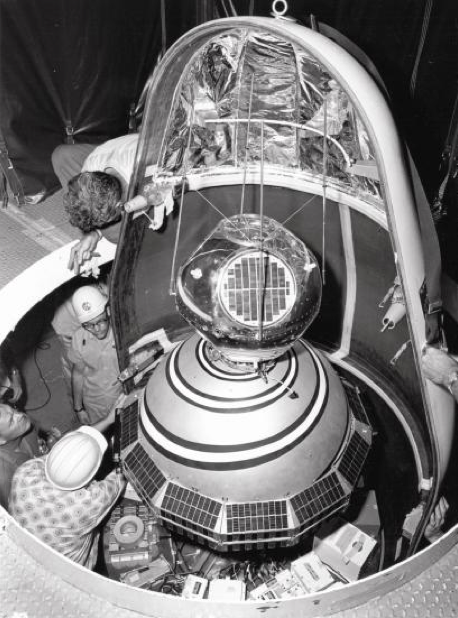
Transit 2A and GRAB-1 are prepared for launch
A full account of the Navy's involvement in military space programs really deserves a series of its own. Notable early achievements included the Transit navigation system, which provided hourly fixes anywhere on Earth to an accuracy previously unattainable, and GRAB, the first reconnaissance satellite, intended to map Soviet air defense radars. Communications satellites were another major area of research, and the Navy even developed the so-called "space fence", intended to detect everything in low orbit. The Navy had some involvement in the Air Force-led Manned Orbiting Laboratory program, although it was cancelled before it was flown, and the astronauts assembled were largely transferred to NASA.
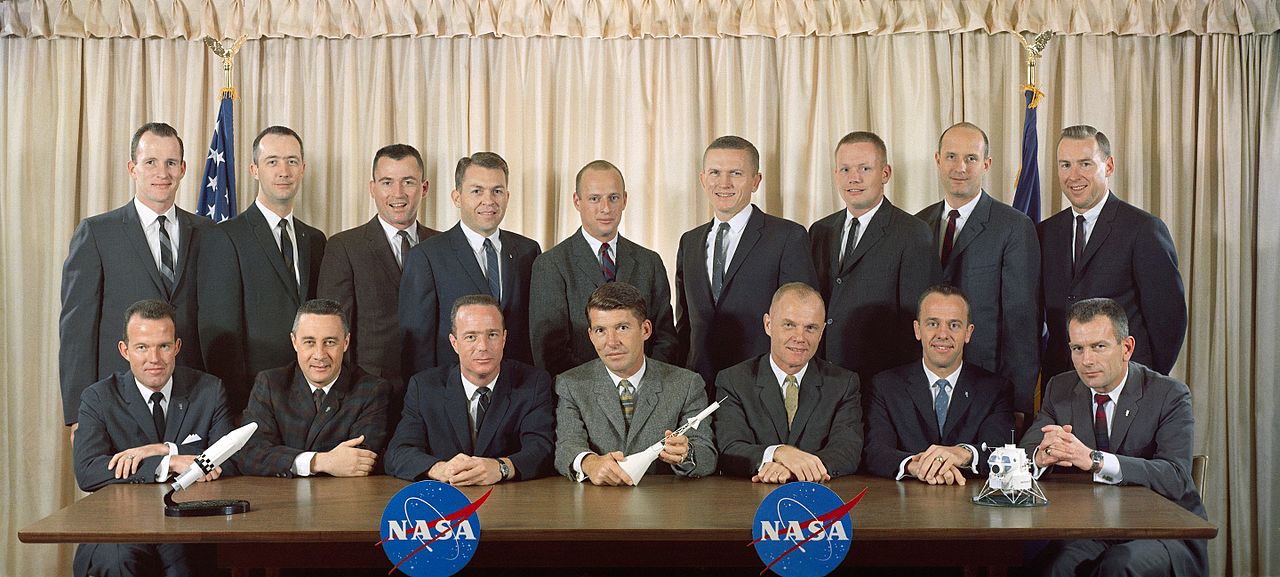
Astronaut Groups 1 and 2
As mentioned at the start of this article, the Navy contributed heavily to the (theoretically) civilian astronaut corps assembled by NASA for the Space Race. Four of the original Mercury Seven were Naval Aviators, as were five of the second batch and six of the third, men who flew the bulk of the missions that took America to the Moon. Alan Shepard, the first American in space, was a Navy test pilot, while John Glenn, the first American into orbit, was a Marine. Half of the seats on Project Gemini were occupied by Navy astronauts,3 as were seventeen of the 33 seats on the main Apollo missions. Neil Armstrong, the first man on the Moon, had flown jets for the Navy during the Korean War before retiring to join NASA. Three men, Jim Lovell, John Young, and Gene Cernan, flew to the moon twice, and all were Naval Aviators. As of today, Cernan is still the last man to set foot on the Lunar surface. Navy astronauts continued to be important even as Apollo wound down. Six of the nine Skylab astronauts were from the Navy or Marine Corps, and the Shuttle continued the Navy's tradition of having someone on the first manned flight of every US spacecraft, although it was the Marines that sent a representative to the SpaceX Dragon, and the Navy looks set to return with the Starliner.
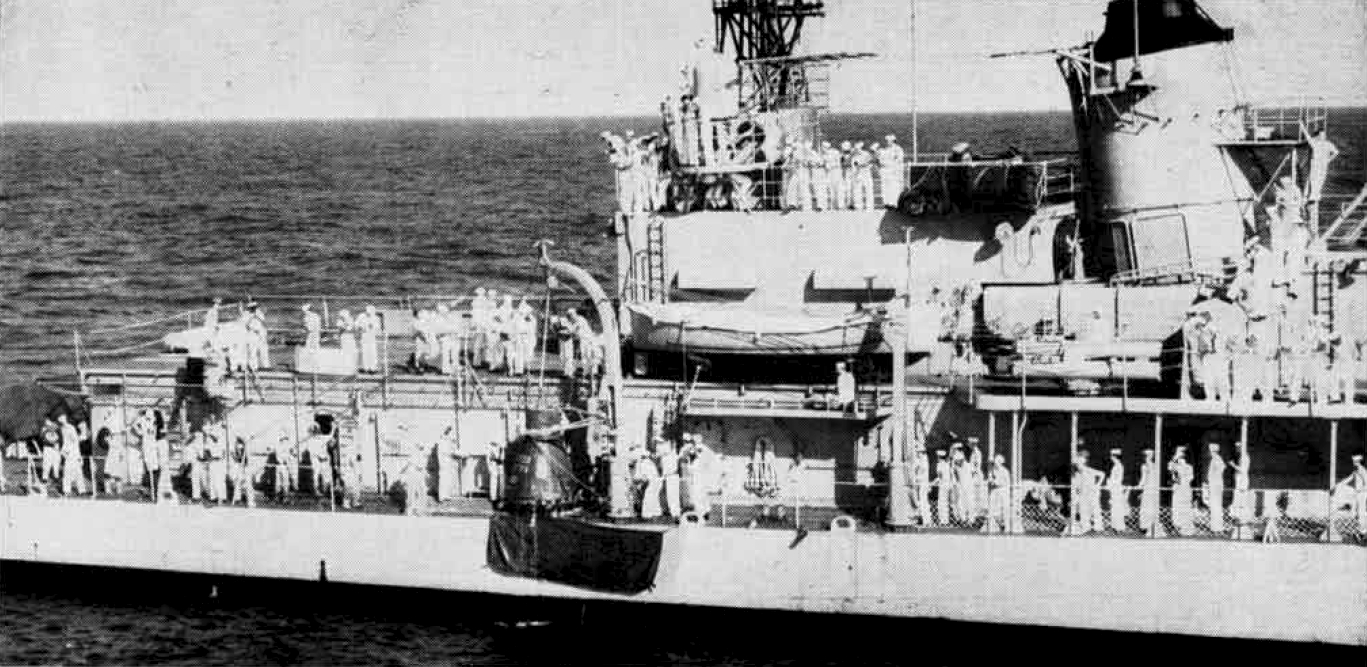
USS Noa hoists John Glenn's capsule aboard
The worldwide reach of the USN meant that the US decided to recover its capsules at sea, instead of on land as the Soviets did. Initially, this meant a huge commitment of ships and airplanes, as there were serious fears of the Mercury capsule being forced to suddenly abort. John Glenn's flight in 1963 was supported by 24 ships (including three carriers), 49 airplanes, and 14 helicopters, and while the number of ships stayed relatively steady, the number of airplanes doubled as longer missions covered more of Earth's surface. Typically, the recovery group was centered around a carrier, which could have helicopters on-scene even before the capsule had hit the water. The helicopters would drop swimmers who would attach a flotation collar to the capsule, while the crew would exit and be hoisted into one of the waiting choppers. The capsule would then be picked up either by helicopter or simply hoisted aboard a ship.
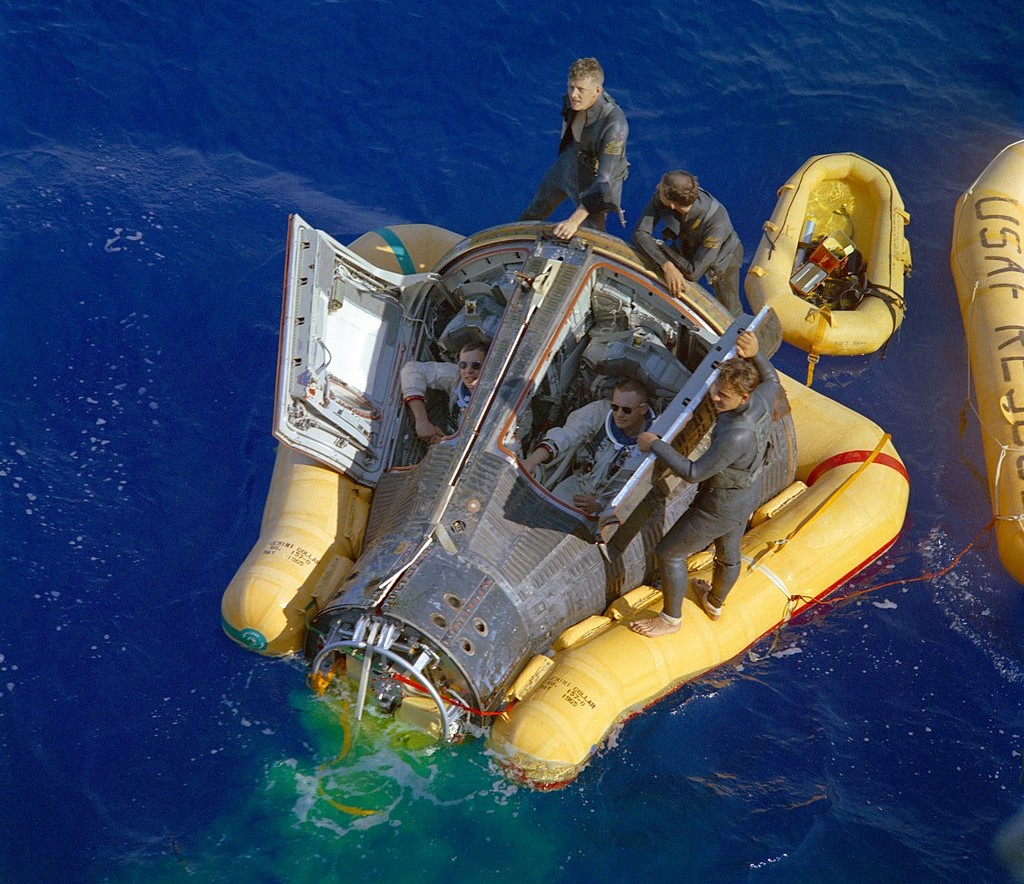
Gemini 8 awaits recovery
During Gemini, the fear of a sudden abort abated somewhat, and the recovery forces shrank throughout the program, from 21 ships for Gemini 3 to 11 ships for Gemini 12. One of these forces had to deal with the only sudden abort during the US space program. Gemini 8, shortly after making the first docking in space, had a thruster get stuck open and had to use the reentry thruster system to stabilize. Mission rules dictated an immediate landing, which took place one orbit later, in the Pacific. This was three days early and on the wrong side of the globe for the primary recovery force, but the destroyer Leonard F. Mason was dispatched, along with airplanes which were on hand as the capsule splashed down. Astronauts Neil Armstrong and Dave Scott spent three hours using their capsule as a very unstable boat before Mason arrived and fished them out.
Apollo 17 awaits pickup by USS Ticonderoga
Apollo saw another reduction in recovery forces, particularly for the Lunar missions, where the possibility of a capsule unexpectedly returning to Earth was greatly reduced. The first Lunar missions required extensive quarantine procedures on the part of the recovery swimmers and the carrier itself, to avoid the risk of infection from Lunar diseases, but this was abolished for Apollo 15 and later missions. By Apollo 17, things had become so routine that only four ships were used for the recovery, and the capsule landed so accurately that the aimpoint was offset from the carrier for fear of it actually landing on the flight deck.
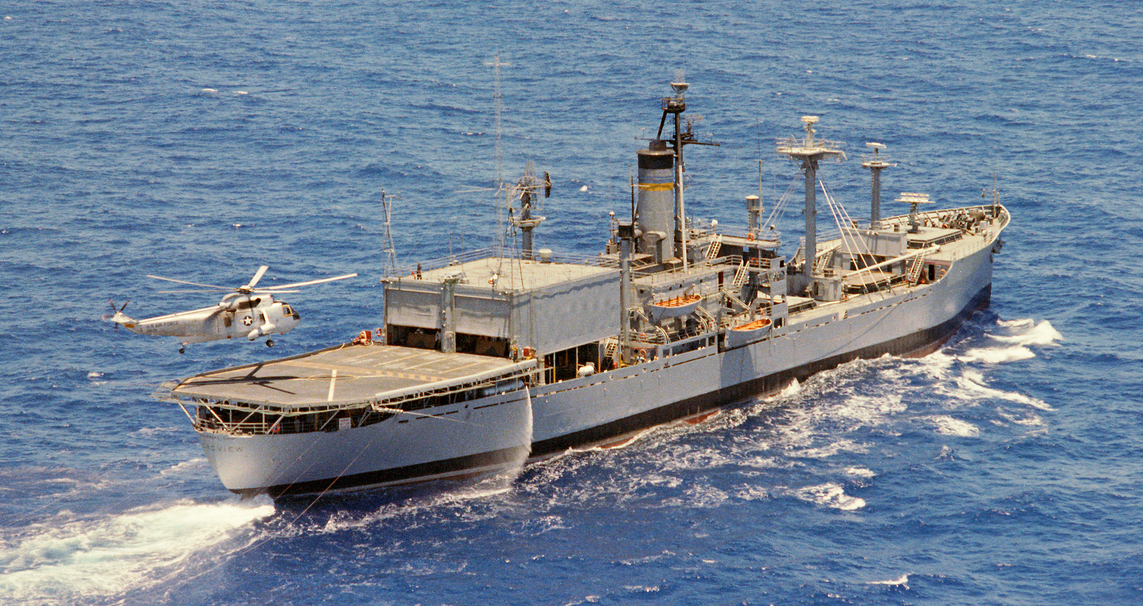
Tracking ship USNS Longview
One last facet of Navy support for the space program that deserves mention is tracking ships. Spacecraft could only communicate when they were in line of sight to a ground station. While in low orbit, this only covered a few hundred mile radius, which left large swathes of the orbit uncovered by the network of fixed ground stations, particularly over the oceans. Tracking ships, mostly converted cargo ships originally intended to support missile tests, were used to plug these gaps.
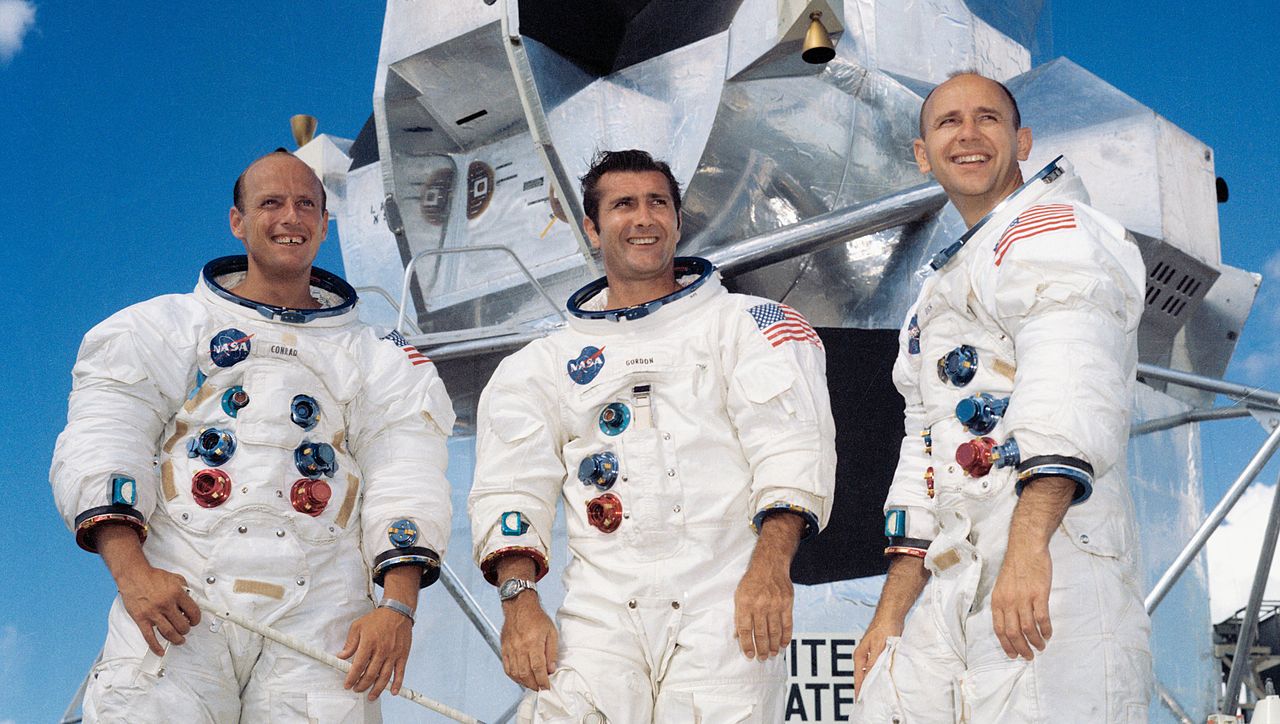
Conrad, Gordon and Bean
From the earliest days of the American space program until today,4 the USN has played a vital role. It provided many of the building blocks that eased the way into space and trained the men who flew those first missions, then fished them out of the ocean when they returned home.
1 Yes, Marine pilots are also Naval Aviators. They have largely the same training pipeline, and most carrier deployments include a Marine fighter squadron. ⇑
2 Pete Conrad, Dick Gordon and Alan Bean. Conrad was a particularly colorful character, whose first words on the Lunar surface were "Whoopie! Man, that may have been a small one for Neil, but that's a long one for me" to win a bet with a journalist. (He was among the shortest of the astronauts at the time.) He was also the first man to dance on the Moon. ⇑
3 Gemini flew 10 missions (20 seats) with 16 astronauts, seven of them Navy. Of the four astronauts who flew twice, three (Lovell, Conrad, and Young) were USN. ⇑
4 Of the three American capsules under development, the Boeing CST-100 lands on land, while SpaceX fishes its capsules out itself. The Orion capsule is retrieved by the Navy. ⇑

Comments
What is the Longview trailing in that picture?
Not sure. Some kind of antenna? Maybe an electrical ground?